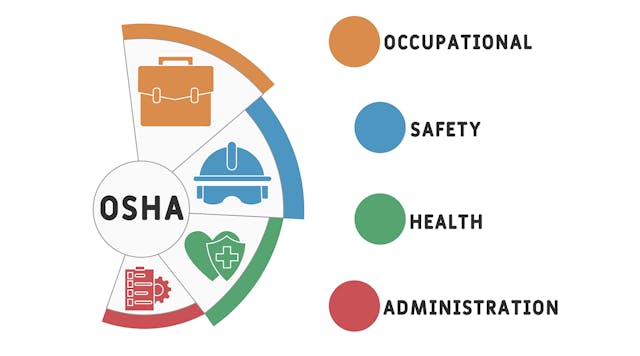For three decades, Michele Gelfand—a cultural psychologist and distinguished university professor at the University of Maryland—has studied systematically the cultures of more than 50 countries. She has researched and documented a human dynamic that explains opposing reactions following top-down specifications of a regulation or rule, from a basic safety protocol to a requirement to wear a COVID-prevention face mask. Some people willingly comply with such directives; others reluctantly follow a mandate; and others resist compliance, sometimes with negative vocal discord and even physical conflict.
Professor Gelfand explains these differences in her profound and provocative 2018 book, Rule Makers, Rule Breakers: How tight and loose cultures wire our world. Indeed, the tight/loose dynamic influences our thoughts and behaviors regularly and can explain critical differences between people’s daily decisions as well as their interpersonal exchanges. An understanding of this fundamental cultural distinction could facilitate an appreciation and acceptance of certain individual differences; it can also help reduce and/or resolve interpersonal conflict.
As Gelfand notes, “Tight-loose theory can help deepen our empathy toward those whose way just doesn’t sync with ours.”
Tight vs. Loose Countries
Tighter countries (e.g., China, Germany, India, Japan, Pakistan and Singapore) often have autocratic governments. The citizens promote self-control, cling to stability and monitor social media.
For example, China has for years tracked online opinions and criticisms about the government among both residents and Chinese expatriates. Meanwhile, Singapore—a small island country of about 5.6 million residents—epitomizes excessive control of public behavior by levying hefty fines for seemingly minor offenses. A person could be fined up to $1,000 for spitting on the street or for forgetting to flush a toilet in a public bathroom stall. Alcohol consumption in public is banned from 10 p.m. until 7 a.m., and making too much noise in public places can lead to imprisonment and/or a fine. Some elevators in Singapore are engineered to detect urine; if activated, the doors of the elevator lock shut until the authorities arrive to identify and fine the rule breaker.
Tighter countries typically have:
- higher population densities (e.g., India has more than a thousand residents per square mile),
- been burdened by infectious diseases (e.g., malaria, typhus and tuberculosis),
- endured more national disasters (e.g., China, Japan and Malaysia) and
- fewer natural resources.
The solidarity among the residents in these tighter countries increases the probability of surviving a national disaster. These countries have generally been more successful at controlling the COVID-19 pandemic because tightness and solidarity enhance compliance with COVID-prevention behavior. These human dynamics also provoke anger toward those who do not wear a face mask properly or who do not get vaccinated when the vaccine is readily available.
Loose countries (e.g., Australia, New Zealand, Greece, the Netherlands, Spain and the U.S.) typically:
- evidence more creativity and a higher percentage of immigrants,
- are more open to change and different ideas,
- are more tolerant of diversity and more accepting of the LGBTQ+ community and
- promote free speech.
Relatedly, nearly half of all Dutch children are born to unmarried parents. These looser countries also experience higher rates of alcohol consumption, more gambling and more obesity.
In addition, these looser countries have not handled the COVID-19 pandemic as well as the tighter countries, primarily because of lower adherence to COVID-prevention behaviors—wearing face masks properly and obtaining available vaccinations. As one American was quoted on CBS News, “I believe in the vaccinations; I just want it to be my choice.”
The Curvilinear Effect
Gelfand and her associates assessed citizens’ subjective well-being (SWB) in more than 30 different countries and discovered a curvilinear relationship—an inverted U—between SWB and degree of cultural tightness. The extremely tight and loose nations had the lowest levels of SWB and the highest levels of depression and rates of suicide. Those countries that were moderate or less extreme on the tight/loose continuum scored highest on SWB and evidenced lower depression levels and suicide rates.
Moreover, life expectancy is lowest in the extremely tight countries (e.g., India, Pakistan, Turkey) and in the loosest countries (e.g., Brazil, Hungary, Ukraine). The tightest and loosest countries also have the lowest gross domestic product (GDP) per capita. Incidentally, the U.S. scored relatively high on SWB, but lower than the three countries that were judged to be more loose (Australia, the Netherlands and New Zealand).
Diversity Among States
It is noteworthy that within the relative looseness of the U.S., levels of tight/loose vary significantly between states. Tighter states include Alabama, Arkansas, Oklahoma, Mississippi and Tennessee; looser states include California, Florida, Idaho, Iowa, Nebraska, Oregon and Washington. Regarding general U.S. regions, the West and the Northeast are the loosest, the South is the tightest and the Midwest is midway between tight and loose.
Gelfand’s research revealed a variety of cultural differences between tight and loose U.S. states. In particular, tight states:
- have more police and law enforcement officials and incarcerate a greater proportion of their citizens;
- evidence lower divorce rates, single-parent households and homelessness; and
- have higher percentages of residents who attend religious services, demonstrate in-group loyalty, refrain from both drug use and premarital sex, and “take a black-and-white view of what is right and wrong.”
The data analysts at WalletHub, a website that provides assistance with personal finances, scored each of the 50 states with regard to their recreational options—including beaches, national parks, movie theaters, amusement parks, casinos, bars and music festivals. The most “fun” states were among the loosest—Colorado, Nevada, New York and Oregon—and the least “fun” states were among the tightest—Alabama, Arkansas, Kentucky and West Virginia. While the tighter states have fewer entertainment options, the residents of those states are considered less rude as well as more orderly, polite and self-regulated.
Country vs. Culture
Although we’ve been referring the tight/loose dynamic to different countries, the concept of culture could certainly be substituted for country. Culture is defined by the American Heritage Dictionary as “the attitudes, feelings, values and behavior that categorize and inform society as a whole or any social group within it."
Culture can refer to a particular community, family, organization or work group within an organization. However, by generalizing culture to an entire country, we realize how large-scale factors—such as vulnerability to national disasters, population density, environmental resources, territorial threats and infectious disease—can influence the attitudes, feelings, values and behaviors of the residents of a particular country.
Of course, this tight/loose cultural dynamic is reflected by social norms, which are conveyed and supported from infancy to adulthood. Although social norms provide direction and support for individual and group behavior, Gelfand points out that “tight cultures have strong social norms and little tolerance for deviance, while loose cultures have weak social norms and are highly permissive.”
In the U.S., the tight/loose culture dynamic relates to socioeconomic classes, with upper-class individuals typically being more rude, less ethical and less rule-governed than those in the lower classes. Higher education is generally more difficult for lower-class individuals, partly because of the relatively loose culture in colleges and universities. A study of over 145,000 students at six large public universities found that students from lower working-class families reported a lower sense of belonging, more distress and depression, and less satisfaction with their educational experience than did their peers from upper-class families (Soria, Stebleton and Huesman, 2013).
In tight cultures, college students always address their professors by title—Dr. or Professor—and their last name. However, in the loose culture of the U.S., many students call professors by their first name, especially the younger faculty. This is typically accepted by most professors and is often encouraged. Similarly, in the U.S., polite salutations and personal signatures are often missing in letters, e-mails and text messages.
Takeaways for Safety Leaders
This brief review of the tight/loose distinction evidenced in different countries, U.S. states, and within community and organizational cultures helps to explain observations of variable human reactions to occupational health and safety (OHS) rules and regulations—from willing compliance to reactive resistance.
The tightness or looseness of the culture in which people are raised and nurtured certainly influences their willingness to follow a prescribed protocol. In the workplace, compliance with safe operating procedures (SOPs) is required and monitored. Tight cultures have no trouble making this happen, but such top-down control can be challenging in a loose culture or among employees with a loose-culture mindset.
However, top-down rules and regulations can seem less controlling when management involves employees in customizing SOPs for their own work areas. In addition, a work culture loosens up when management solicits safety suggestions from employees, and then implements those that are relevant and reasonable.
Perhaps realizing that nurture can program individuals to resist mandates that are perceived to reduce individual choice will enhance empathic understanding among those who resist obedience. Perhaps it will also inspire the use of these and other techniques to increase perceptions of autonomy in an OHS system that requires compliance with specified rules and regulations. The more employee involvement in an organization’s OHS process—from customizing and evaluating SOPs to developing and implementing interventions to increase occurrences of safety-related behavior—the greater the perception of individual choice and personal commitment to support OHS.
E. Scott Geller, Ph.D., Alumni Distinguished Professor, is director of the Center for Applied Behavior Systems at Virginia Tech. He is a co-founder and senior partner of Safety Performance Solutions Inc. and GellerAC4P Inc.
References
Gelfand, M. (2018). Rule Makers, Rule Breakers: How tight and loose cultures wire our world. New York: Scribner.
The American Heritage Dictionary (1991). Second College Edition. New York: Houghton Mifflin Company.
Soria, K.M., Stebleton, M.J., and Huesman, R.J., Jr. (2013). “Class counts: Exploring differences in academic and social interaction between working-class and middle/upper-class students at large, public research universities.” Journal of College Student Retention: Research, Theory & Practice, 15(2), 215-242.















































































